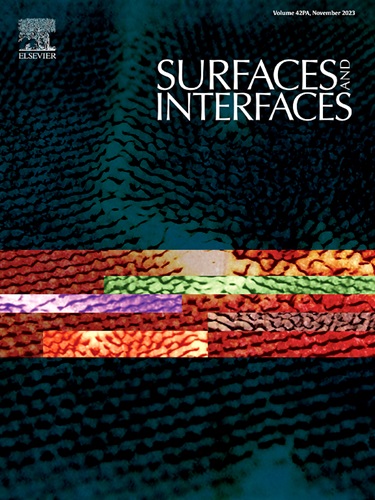Decoupling fracture energy from crack area via surface patterning
IF 5.7
2区 材料科学
Q2 CHEMISTRY, PHYSICAL
引用次数: 0
Abstract
This study investigates whether surface patterning can decouple fracture energy from treated area fractions and examines the relationship between surface wettability and fracture energy. By using a nanosecond pulsed laser to create square-shaped patterns on AA7075-T6 aluminum surfaces, we explore the impact of pattern size on wettability and fracture behavior, offering new insights into optimizing surface treatments for enhanced material performance. The pattern sizes ranged from the micrometer to millimeter scale, with reference samples, including fully untreated and fully laser-treated surfaces, also prepared and tested.
Wettability assessments revealed that increasing the laser-treated area fraction significantly enhanced wetting. Distinct differences between micro- and larger patterns were observed, with larger patterns altering the wetting area’s shape and reducing the effective contact angle. These findings highlighted a direct link between pattern geometry and wettability, which is important for predicting and controlling fracture energy.
Laser treatment profoundly impacted fracture energy and failure modes of epoxy bonded aluminum adherends. Untreated samples exhibited adhesive failure at low fracture energy values, whereas fully treated samples showed cohesive failure with fracture energy nine times higher. Intermediate cases displayed a mix of the two failure modes. Theoretical and numerical models were developed to predict and interpret these experimental results, highlighting that surface pattern size significantly influences adhesion and fracture properties.
The results suggest that fracture energy cannot be uniquely predicted by the treated area fraction alone, underscoring the potential of precise surface patterning to control crack growth resistance and suggesting a relationship between wettability and fracture energy.

求助全文
约1分钟内获得全文
求助全文
来源期刊

Surfaces and Interfaces
Chemistry-General Chemistry
CiteScore
8.50
自引率
6.50%
发文量
753
审稿时长
35 days
期刊介绍:
The aim of the journal is to provide a respectful outlet for ''sound science'' papers in all research areas on surfaces and interfaces. We define sound science papers as papers that describe new and well-executed research, but that do not necessarily provide brand new insights or are merely a description of research results.
Surfaces and Interfaces publishes research papers in all fields of surface science which may not always find the right home on first submission to our Elsevier sister journals (Applied Surface, Surface and Coatings Technology, Thin Solid Films)
 求助内容:
求助内容: 应助结果提醒方式:
应助结果提醒方式:


